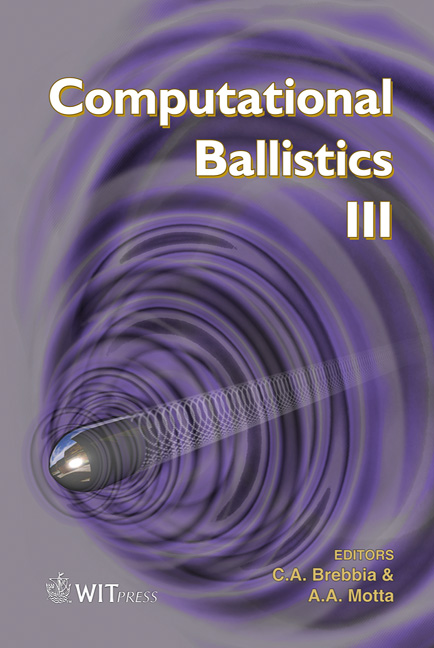Generating An Aerodynamic Model For Projectile Flight Simulation Using Unsteady Time Accurate Computational Fluid Dynamic Results
Price
Free (open access)
Transaction
Volume
45
Pages
24
Published
2007
Size
1,272 kb
Paper DOI
10.2495/CBAL070041
Copyright
WIT Press
Author(s)
J. Kokes, M. Costello & J. Sahu
Abstract
A method to efficiently generate a complete aerodynamic description for projectile flight dynamic modeling is described. At the core of the method is an unsteady, time accurate computational fluid dynamics simulation that is tightly coupled to a rigid body dynamics simulation. A set of n short time snippets of simulated projectile motion at m different Mach numbers is computed and employed as baseline data. For each time snippet, aerodynamic forces and moments and the full rigid body state vector of the projectile are known. With time synchronized air loads and state vector information, aerodynamic coefficients can be estimated with a simple fitting procedure. By inspecting the condition number of the fitting matrix, it is straight forward to assess the suitability of the time history data to predict a selected set of aerodynamic coefficients. To highlight the merits of this technique it is exercised on example data for a fin stabilized projectile. The technique is further exercised for a fin and spin stabilized projectile using simulated data from a standard trajectory code. Keywords: projectile, flight dynamics, aerodynamic coefficients, CFD. 1 Introduction There are roughly four classes of techniques to predict aerodynamic forces and moments on a projectile in atmospheric flight: empirical methods, wind tunnel testing, computational fluid dynamics simulation, and spark range testing. Empirical techniques aerodynamically describe the projectile with a set of
Keywords
projectile, flight dynamics, aerodynamic coefficients, CFD.




